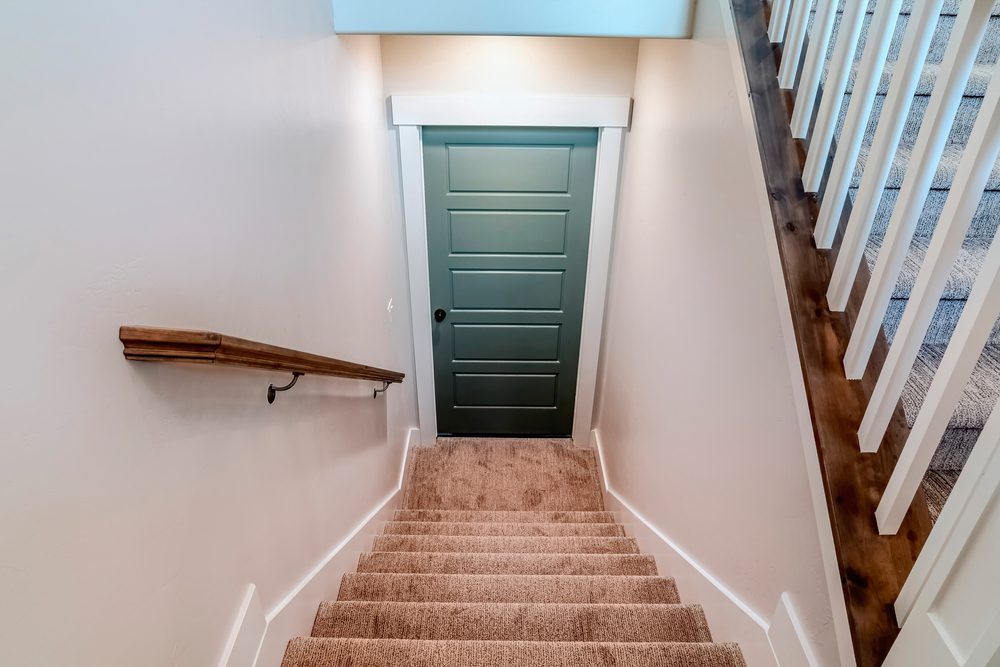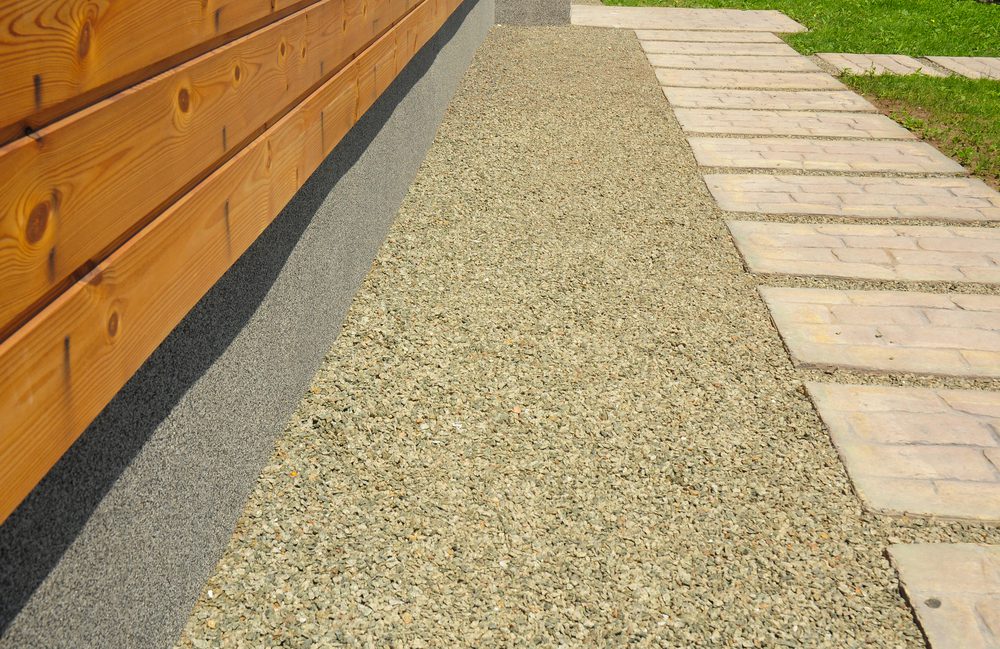Few things are more important to your house’s health than its ability to remain dry, even in the wettest of conditions. If your home has a basement, then those needs are even more vital due to its below-grade level and proximity to the water table.
Having a consistently dry basement allows you to increase your living space, sometimes even doubling it, which is fantastic. Truth be told, having more space in your house is always great. A dry, finished basement increases your house’s value and ensures that the home’s upper floors as well as its structure will stay in good condition.
Why It’s So Important To Have a Dry Basement
Your basement should remain dry in case you want to turn it into a usable space. Except for the vital services located in the basement like the furnace, washer, dryer, and water heater, a finished basement can have the same habitable square footage as the floor directly above. For instance, a 1,000-square-foot house can become a nearly 2,000-square-foot house with a well-planned basement finishing project.
But before starting to renovate it, you must make sure your basement is 100% waterproof. Few surfaces tolerate moisture well: carpeting, paint, drywall, and even hard flooring such as engineered or laminate wood flooring.
If you don’t plan to renovate the underground space, you should still try to keep it as dry as possible. Moisture can damage building materials, including those that are vital to your house’s structural integrity. Not to mention that high humidity levels can also contribute to the growth of mildew and mold. While not all types of mold are toxic, some of them can produce harmful mycotoxins.

Basics of Basement Waterproofing
Waterproofing an underground space is a multi-step process. Common quick fixes like clearing gutters or coating the interior walls alone won’t solve the high humidity issues. Instead, waterproofing is a sequential process with interlocking projects that coordinate to make your basement as dry as possible.
Think of your home as having three concentric zones or rings — inner, middle, and outermost — that work together to bring your home’s basement to its driest possible condition.
The outermost zone is the space outside of the house but not connected to the building itself. Basically, there’s the earth that sends water toward your home. Your goal in this area is to prevent the water from entering your house.
The middle ring is your house’s exterior envelope. In other words, this is the exterior of the house itself, which includes the foundation wall, gutters, windows, window well covers, and drainpipes. Here, you’ll want to ensure that the water elimination systems are functioning perfectly and that the water production systems stop the water from entering your house.
Finally, the inner zone or ring is everything inside the underground space, including the interior side of the foundation wall, sump pump, and flooring.
Causes of a Wet Basement
- Missing or improperly draining downspouts and gutters: Downspouts may be missing pieces meant to divert the water away from your house. Clogged gutters can cause water to spill, reaching close to the foundation.
- Poorly graded soil: Earth that is level or slopes back to your house can send water toward the foundation, where it can leak into the house.
- Poorly designed window wells: Every basement window should have a window well, which is like a pocket in the earth. Those wells can pool up with water.
- Poorly Installed Window Well Covers: They are designed to prevent water and debris from reaching basement windows. If covers are missing or loose, water may infiltrate those windows.
- Blocked French Drains: French drains are buried water drainage systems that can become blocked with roots or soil.
- Ineffective drain tile: A drain tile is a buried pipe that removes excess water from around the outside of the house.
- Sump pump not draining: An inoperable or poorly functioning sump pump can’t drain rising water.
- Cracks in the foundation wall: Structural walls can let water flow into the basement.
- Water up through the sump: During heavy rains, water can enter the basement through the sump pit.

Exterior Yard Methods of Stopping Water
Method No. 1: Develop a Robust Drainage System
Set up a drainage system of catch basins that collect downspout water, diverting it far away from your house along buried 4-inch sewer pipes. If it’s possible, bring the ends of the pipes outside the ground. If not, pop-up drains located in the yard can also do the job of letting the water out. Ideally, the end of the downspout extensions should be away from the property line so the water doesn’t flow onto your neighbor’s property.
Method No. 2: Grade the Soil Away From the Home
Use a shovel, rake, and wheelbarrow to make a slope that goes downward and away from the foundation wall. A 5% slope is more than enough to do its job (about 6 inches of drop per every 10 feet). Make sure the slope reaches at least 10 feet to stop water from flowing back to the house. Also, you want to ensure the soil stays away from the siding.
Method No. 3: Fix or Build French Drains
Determine where in your yard water collects or flows back toward the house. Once you’ve done this, dig a trench and install a French drain. Also called a curtain drain, a French drain is a perforated pipe covered with a special drainage fabric that filters dirt. Next comes a layer of gravel, and then the pipe is refilled with earth and sod.
Method No. 4: Create Barriers
Below-grade windows or other basement openings that are located in flood-prone areas must have water-tight barriers that work as dams to hold back water. The Federal Emergency Management Agency (FEMA) recommends earth berms or watertight masonry barriers in areas that experience flooding.
Exterior House Methods of Basement Waterproofing
Method No. 1: Damp-Proof Seal or Waterproof the Foundation Wall
Damp-proofing is a process through which an asphalt-based material is rolled, brushed, or sometimes sprayed onto the exterior of the foundation wall. Waterproofing is a more involved method where a layer of impermeable material is applied to the outside of the foundation. All seams must be lapped to prevent water leakage.
Another method involves using a sprayed-on material that has the same thickness as the solid materials. This special product is a liquid-rubber, elastomeric coating that requires multiple applications to achieve the proper thickness.
Method No. 2: Add or Fix Window Well Covers
Molded plastic or galvanized steel pieces called window wells are connected to the house’s exterior foundation. Window wells can also come with special covers.
Though window wells are generally designed to keep your window free of debris and prevent soil collapse, they can also help with moisture infiltration. Enclosing the window well with covers prevents snow and water from reaching the window.
Window wells allow a section of the heart around the window to let air and light reach basements and to help with egress. As with grading the soil away from your house, make sure that window wells do not lead water toward the basement window.
Method No. 3: Fix or Add Gutters and Downspouts
While fixing downspouts and gutters may seem like one of the more conventional methods to keep your basement dry, it’s actually one of the most efficient ways — especially when cost-to-benefit is taken into account.
Without extensions, downspouts drive water right up against the foundation, which may have devastating effects. By spending some money on an extension, you can actually save thousands of dollars in eventual damage.
- Fix sagging gutters to ensure they have a proper slope.
- Seal gutters to prevent leaks.
- Fix loose downspouts and add extensions.
- Clear out blocked gutters and downspouts.

Interior Methods of Basement Waterproofing
In the best-case scenario, outside approaches should be enough to waterproof your basement, and you won’t need to employ any interior methods. But the truth with basements is that you’ll often need to also focus on the inside.
Interior Foundation Coatings
These coatings either roll or brush onto the inside of poured concrete, concrete block, or other masonry foundation walls. Waterproofing coatings usually come in neutral or white colors but can be tinted. The application process is quite easy and fairly quick, obviously depending on the scale of the project. Most ready-mixed products dry in about three hours to allow for multiple coats.
They are the last line of defense for leaky or damp walls. Most waterproof coatings have between 10 and 15 psi water pressure ratings.
Sump Pumps
Sump pumps are common elements in basements where groundwater intrusion is an issue. They are also capable of clearing basement floods. Install a sump (the pit or basin portion) and add a sump pump if you’re dealing with basement moisture. If you already have a sump pump, make sure you keep it well maintained.
Dehumidifiers
If the humidity level in your basement exceeds 50%, it is most likely too high. Ideally, the basement humidity range should stay between 30 and 50%.
Dehumidifiers are a great way to get rid of excess moisture in the air. Most dehumidifiers can remove 30 to 50 pints of water per day. In cold climates, one benefit of using a dehumidifier in your basement is that drier air will be warmer than humid air.
You may also want to read These 10 Garage Updates Will Boost Your Home’s Value.















